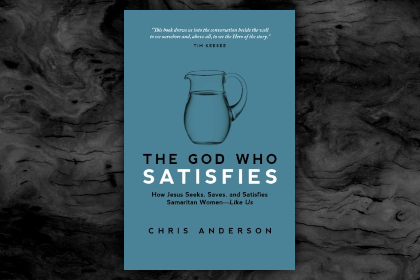A Biblical Understanding of Culture and Music
“Historically and currently, cultural anthropologists identify three primary subcultures: Folk, high, and popular/mass. According to musicologists, these subcultures also identify the three main musical genres.” - P&D
- 72 views
The wording in a lot of places in this piece reminds of “according to science…” The missing word is “some” (or perhaps “many” or “most,” but that would take more research to support.)
It belongs above before “musicologists,” but also lots of other places.
Not that the particular musicologists and culture analysts cited are all wrong about everything. But the article does not interact with alternative views among them.
Here’s an interesting read on high culture:
An excerpt
Conversely, twelve respondents applied one or more of the modern criteria, particularly originality and innovativeness, when defining high culture. They said that high culture was ‘in any case very experimental’ (Paul), that it ‘searches for new horizons and finds new perspectives’ (Rudolf) and that it ‘in particular avoids repetitions’ (Charles). Rodney (juggling performer, 51) added that being ‘unique, creative, pioneering’ was perceived as better than doing ‘the same old routines as 20 or 25 years ago’. Ronald (anthropologist, 35) ranked rock band Radiohead above Bach in the cultural hierarchy, because:
“There are only a few bands that have innovated and changed music and that gave it such a personal feel and artistic dimension, so I don’t think it’s unreasonable to put it next to someone like Bach. Because, in our time, they have been pioneering.”
Some interesting reading there.
My own view is that it can be useful to look at culture and art in terms of high, folks, and pop…. roughly like it’s useful to think of dogs as small, medium, and large. There are lots of situations where that could work well and lots where it would be inadequate.
Due to the prosperity of the West, music-making is extremely competitive now. Sometimes someone gets lucky, but mostly people succeed across all the genres only if they are disciplined and rigorous about their craft. Further, because we are so flat now culturally (YouTube, Spotify, , there is not one set of messaging for high culture and another for folk and another for pop. All of those have some serious artists who are trying to say serious things. Many are just trying to earn a living, and messaging is not on their minds at all. With folk and pop that tends to be more transparent. It’s a bit harder to tell with ‘high,’ if that is even really a thing anymore.
Let me briefly illustrate what I mean: https://www.youtube.com/watch?v=68zOvCLwcL8
Is this “high” or “folk” or “pop”? The song itself was a Bob Dylan song that became a country music hit. It was very popular. Country has a whole lot of certain kinds of folk in it, so maybe it’s folk? But acapella choir singing in classical style? I suppose I’m supposed to believe it’s corrupted high culture? (Trigger warning. This video might make you cry.)
https://www.youtube.com/watch?v=rEYNoXwA6Qk
Speaking of Anna Lapwood, what is this? https://www.youtube.com/watch?v=w7yuFWS_6Tc
It’s not obvious to me whether pop is corrupting high culture there or high culture is improving pop. Any claim on that point would have to be supported with a strong argument, if we hope to be persuasive.
Another one is Laufey. Neely analyzes here: https://www.youtube.com/watch?v=68zOvCLwcL8 Lots of people call her thing “jazz” but the first half a dozen songs I heard were, to be, obviously 1940s pop. Skip to 2:54 if you’re in a hurry and you’ll see what I mean.
So is it pop? But the style is old and usually slow, and not very drummy. Isn’t that ‘high’? (I’m being facetious here. There’s a lot of high influence in it, but it’s totally throwback pop. And she’s ridiculously popular now in 2025. Who’da thunk it?)
As we continue to wrestle with how to live Christianly as cultures shift, we need to recognize that we’re in a place not quite like anything that came before. Think printing press but this time it’s internet, social media, and AI. So cultural analyses that don’t deal with how these technologies have shaped the arts and us are not going to be adequate.
At the very least we need to add an item: high, folk, pop, and fusions. But I really think going forward almost everything is going to be fusions.
Views expressed are always my own and not my employer's, my church's, my family's, my neighbors', or my pets'. The house plants have authorized me to speak for them, however, and they always agree with me.
I commend to you "Harptallica". Lovely full size harps, gowns, and...Metallica. You'll see the same thing as Aerosmith performed with Andrea Bocelli and a full orchestra in the Coliseum, or the opening to Elvis' "Aloha Live from Hawaii", taken from Strauss' Also Sprach Zarathustra, launching into See See Rider.
And let's be real; Copland uses a lot of folk tunes in his work (e.g. "Simple Gifts"), and you'll also find folk tunes used by Beethoven, Tchiakovsky, and others. Regarding the supposed dichotomy between sacred and secular music, you've got the decidedly classical (and pagan) roots of "Ode to Joy" and "Be Still my Soul", among other hymns from the hymnal. Then you have folk songs becoming hymns like "Amazing Grace" and a lot of Salvation Army hymns ("Why should the Devil have all the good music?").
Add to that the fact that the musical cues of spirituals, black Gospel, blues, jazz, and rock & roll (also Southern Gospel to a degree) are similar because of their common roots, and I've frankly got to wonder if P&D's supposed "musicologists" really understand much about their own subject.
Along the same lines, does Scripture support such a trichotomy of folk, sacred, classical? Since we really know little about the music of the ancients besides the instrumentation and some of the lyrics, I am at a loss as to how we would support such a differentiation. So I am very comfortable contemplating belting out some stanzas of I....want to praise the Lord all night, and worship every day! with full orchestra and eight part harmonies.
Aspiring to be a stick in the mud.
There are actually 4 key subcultures. I am not aware of anyone holding to 3. There is 1) Folk, 2) High, 3) Mass, 4) Low. In reality there are hundreds of subcultures depending on how you are breaking down the mix.





Discussion